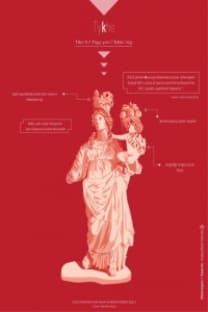Enerjinin Doğulu Oyunculuk Pratiklerinde Yeri ve Eugenio Barba’nın Antropolojik Tiyatro Çalışmalarına Yansıması
: Enerji, No, Kathakali, Jingju, Eugenio Barba.
The Place of Energy in Eastern Acting Practices and Its Reflection on Eugenio Barba’s Anthropological Theater Works
Energie, Noh, Kathakali, Jingju, Eugenio Barba.,
___
- Barba, E. ve Savarese, N. (2017). Oyuncunun gizli sanatı: Tiyatro antropolojisi sözlüğü. İstanbul Bilgi Üniversitesi Yayınları.
- Barba, E.& Zarrilli, P.B. (1988). Eugenio Barba to Phillip Zarrilli: About the visible and the invisible in the theatre and about ISTA in particular. TDR. Vol. 32, No. 3 (Autumn, 1988), 7-16.
- Berberich, J. S. (1984). Some observations on movement in Nō. Asian Theatre Journal, Vol. 1, No. 2, 207-216. Coomaraswamy, A. K. (1995). Sanatın tabiatındaki başkalaşım. İnsan Yayınları.
- Emmert, R. (1997). Expanding Nō’s horizons: Considerations for a new Nō perspective. J. R. Brandon. (Ed.). Nò and Kyògen in the contemporary world içinde (19-35). University of Hawai'i Press.
- Ergün, S. (1999). Çağdaş tiyatronun oyunculuk tasarımında doğaçlama [Yayımlanmamış doktora tezi]. Dokuz Eylül Üniversitesi.
- Fang, T. (2012). Yin Yang: A new perspective on culture. Management and Organization Review, Vol. 8, No. 1. 25–50. doi: 10.1111/j.1740-8784.2011.00221.x
- Fischer-Lichte, E. (2014). Interweaving performance cultures – Rethinking ‘intercultural theatre’. E. Fischer-Lichte, T. Jost, S. I. Jain (Ed.). The politics of interweaving performance culture içinde (17-42). Routledge.
- Fischer-Lichte, E. (2016). Performatif estetik. Ayrıntı Yayınları.
- Halaçoğlu, B. (2019). Çağdaş oyunculuk eğitiminde “mevcudiyet” kavramı ve bir uygulama [Yayımlanmamış doktora tezi]. İstanbul Üniversitesi.
- Leder, D. (1990). The Absent Body. The University of Chicago Press.
- Narayanan, M. (2016). Body centric knowledge: traditions of performance and pedagogy in Kathakali. Indian Journal of History of Science. Vol. 51, No. 1. 131-142.
- Nisbett, R. E. (2018). Düşüncenin coğrafyası-Doğulular ve Batılılar nasıl ve neden birbirinden farklı düşünürler? Varlık Yayınları.
- Oida, Y. & Marshall, L. (2013). Görünmez oyuncu. Boğaziçi Üniversitesi Yayınevi.
- Pavis, P. (1999) Sahneleme-Kültürler kavşağında tiyatro. Dost Kitabevi Yayınları.
- Prabhath, B. (2011). A Comparative study of the contemporary actors training process in NOH and Kutiyattam [doctoral thesis]. University of Hyderabad. http://hdl.handle.net/10603/104468
- Repetto, R. C. & Serra, X. (2016). Melodic transformation processes in the arrangements of Jingju Banshi. Fourth International Conference On Analytical Approaches To World Music. New York. 8-11.
- Repetto, R. C. & Serra, X. (2017). A collection of music scores for corpus based jingju singing research. 18th International Society for Music Information Retrieval Conference. Suzhou. 46-52.
- Ruru, L. (2010). The soul of beijing opera- theatrical creativity and contunuity in the changing world. Hong Kong University Press.
- Ruru, L. (2012). Singing, speaking, dance-acting, and combat; mouth, hands, eyes, body, and steps – from training to performance in beijing opera (jingju). Theatre, Dance and Performance Training, Vol. 3, No. 1, 4-26, DOI: 10.1080/19443927.2011.646293
- Serdar, B. (2020). Tiyatro ve performans sanatlarında bilişsel kırılma: yeni beden fenomeni “soma” ve enaktif oyunculuk teorilerine doğru hareket odaklı bir eğitim önerisi olarak somatik yaklaşım [Yayımlanmamış doktora tezi]. Ankara Üniversitesi.
- Thorpe, A. (2015) Observations on the importance of the yao/koshi to the actor in Japanese no and Chinese jingju ‘Beijing opera’. Watson, M., Yamanaka, R. (Ed.), Expressions of The Invisible: a comparative study of noh and other theatrical traditions (19-38). The Nogami Memorial Noh Theatre Research Institute of Hosei University.
- Turner, J. (2004). Eugenio Barba. Routledge.
- Yung, B. (1993). Listening to Theatre: The Aural Dimension of Beijing Opera by Elizabeth Wichmann. Notes, Second Series, Vol. 50, No. 1, 77-80.
- Zarrilli, P. B. (2000). Kathakali dance-drama: Where gods and demons come to play. Routledge.
- Zarrilli, P. B. (2004). Toward a phenomenological model of the actor's embodied modes of experience. Theatre Journal, Vol. 56, No. 4, 653-666.
- Zarrilli, P. B. (2011). Psychophysical approaches and practices in India: Embodying processes and states of ‘being-doing’. New Theatre Quarterly. Vol. 27. Issue 03 244 271 DOI: 10.1017/S0266464X11000455.
- Başlangıç: 2016
- Yayıncı: Düzce Üniversitesi
İmgeye Gömülmek: Plastik Sanatlarda Gömülme Deneyimi Üzerine Bir Değerlendirme
Türk Anıtlarında Bağlamın Biçim ile Kuruluşu
Mekanik Ve Kuvartz Kol Saati Kadranlarına Grafik Tasarım Unsurları
Bruce Gilden Fotoğrafında Grotesk ve Karnavalesk Unsurlar: Bakhtinci Bir Yaklaşım
René Block’un Türkiye Sanat Ortamıyla Tanışması: Türkiye’yi Seviyorum Türkiye de Beni Seviyor
İtalya’da Quattrocento Dönemi Resim Sanatı Sorunları ve Çözümleri Üzerine Bir Araştırma
Türk Savunma Sanayi’nde Yaşanan Gelişmelerin Posta Pulları Üzerinden Değerlendirilmesi
Beden-Mekân İlişkisi Aracılığıyla Sıra Dışı Bir Deneyim Alanına Açılan Mekânsal Algı
